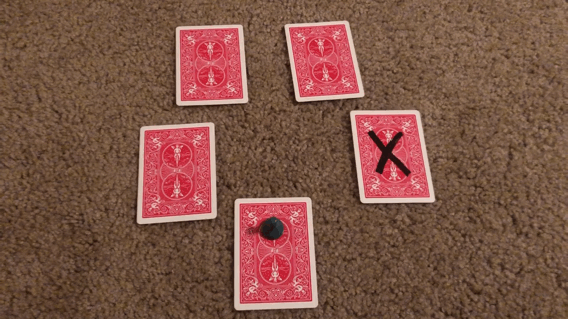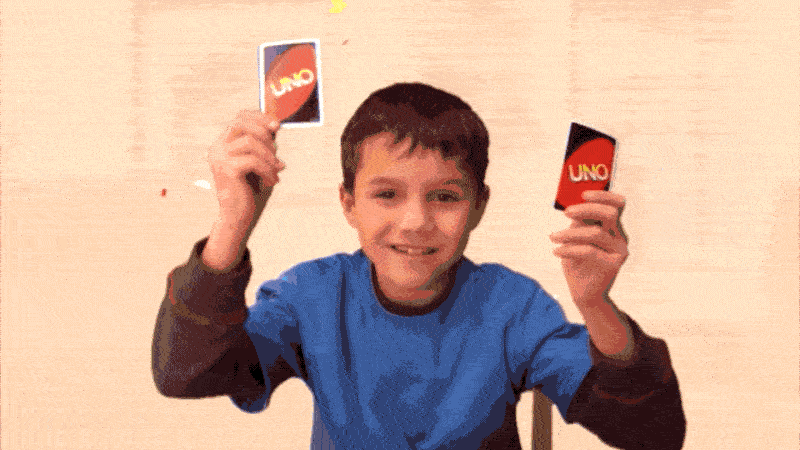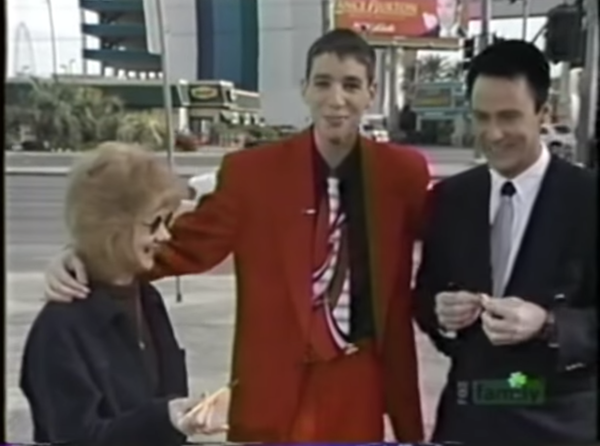Your Origin Story
/“How did you get into magic,” (or the related, “Where did you learn this stuff?) is a question that comes up all the time for magicians, at least in the social magic sphere it does.
Did you get a magic set? Did you read a book in the library? Ok. So what? I’ve made this point before, but millions of kids got magic sets, or checked out books from the library, or had an uncle who showed them a trick. The fact that magicians actually use those things as an answer is sort of ridiculous. Those aren’t rare occurrences. It would be like asking a race car driver, “How did you get into this?” And him replying, “I got my driver’s license!”
People want to know how this became a passion for you. Not whatever dumb thing first introduced magic to you.
This isn’t a job interview, it’s a conversation. It’s a mistake to think that what people are looking for when they ask this is information.
Let’s pause here, because this is true in almost all social situations, so this is going from magic advice to life advice. If you take what I’m telling you here and run with it, it could change your social life. When someone asks you something about yourself, they’re not looking for an answer, they’re looking for a story.
On average I visit one or two coffee shops a day, and if I see a potential first date underway, I’ll almost always park myself nearby so I can eavesdrop on it like some busybody old lady. The majority of the guys there are terrible at carrying on a conversation.
Her: Where did you go to school?
Him: UNLV
Her: Wow. That’s pretty far away from home.
Him: Yeah.
Her: And you studied?
Him: Finance.
Her: Hmmm…and is that what you’re doing at Xerox?
Him: No. I’m in human resources. Do you want some of my scone?
Everything could be a story, but instead he’s just giving information. And this is on a first date, when they’re supposed to be getting to know each other! Get your shit together, guys!
If you’re in the dating world, or the making friends world, or even just the “meeting new people and having good conversations” world, then you need to think in terms of stories to answer questions about yourself: your job, your family, your interests, where you went to school, what you do in your free time, etc.
Ask good questions, really listen, and answer their questions with stories. That’s the secret for connecting with anybody.
What do you mean: a story? How do you answer, “Where do you work?” with a story? I don’t have an interesting story about where I work.
Look, i’m not saying everything has to have a, “It was a dark and stormy night” type story, with a hero and a antagonist to go along with it. I’m just saying you weren’t born working at Applebees, so there is some journey in regards to how you got there, or some journey in regards to where you’re going, so put your answer in that context.
Hey, I’m not some narcissist. I’m not going to answer every simple question with a “story.”
Look, if someone is asking you a question because they need information, then give them the information. If they’re asking the question to get to know you, then give them the story. This is how two people build a connection. They shoot out stories like little vines that get entangled. Two people telling stories and relating to each other’s stories is how you build any type of relationship. If you think collecting straight facts creates any sort of bond then go be a census worker. See how many close friends you make along the way.
So let’s get back to the subject of magic and the question of “How did you get interested in magic?” It’s fine if going to the library, or seeing your uncle perform a card trick, or getting a magic set is part of the answer. But it can’t be the whole thing.
But Andy, I really did get a magic set. And that really was how I got interested in magic.
No it can’t be just that. There has to be more to it. You’re not that malleable that just the mere exposure to a magic kit made you practice magic for the next 20 years.
By that logic, if instead of a magic kit you had gotten this…
you’d be a ballerina princess now.
Or if this had been your Christmas present…
you’d have your PhD in Disgusting Science.
I don’t buy it.
They’re not asking how you were first exposed to magic, but how it took hold. So tell that story.
Now, for a lot of you, that story might be: I was a really socially awkward kid and magic was a way to interact with people in a structured way without exposing too much of my real self to them. You can tell them that story and that type of honesty/vulnerability can be attractive as long as they don’t sense that’s still the reason you perform magic. If that’s still the case, then it will just come across as sad.
When asked how I got into magic, I will often tell my actual origin story, which I posted here years ago. But sometimes I’ll tell two other stories from my youth that are also true, although they’re not really what got me into magic. I was hooked before these incidents. But no one really cares if it’s not the literal truth. If you asked someone how they got into baking and they didn’t tell you the exact inciting incident, but rather some other formative moment from their youth involving baking, I think you’d probably be okay with it. Unless you’re a real weirdo.
Here are the two other answers I frequently give…
1. “Well, I always had an interest in magic, like a lot of kids. Then, one day, I was at a gathering at the house of one of my dad’s old college friends. I was probably 11 at the time. And one of the older guys there knew some magic and showed me a trick that completely blew my young, dumb mind. And I begged and begged him to show me how to do it, but he just wouldn’t. And it was torture for me. So after that I just started reading everything I could about magic and tracking down any information I could find at the library and I convinced my parents to take me to some magic stores. I literally spent months and months trying to figure this trick out and in that time I grew an appreciation for all the different aspects of magic. So that’s where the interest really took hold. After about a year and a half, I finally stumbled on a way to do the trick and it was this huge relief. But then, by that point, there were 50 other paths I was going down. So I was really entrenched in it as a hobby…. Hey… would you want to see that trick that fooled me so bad?”
2. “Well, most kids have an interest in magic to some degree. And I had learned a few tricks from a family friend that I would show people from time to time. And when I was about 11 there was this girl I was obsessed with and during lunch one day I showed her a couple tricks and she was super into it. Like she moved in real close to me and started touching my arm and my shoulder a bunch. Then she put her hand on my leg, which, for an 11-year-old boy is essentially a hand-job. And she was like, ‘You should come over Friday and show me some more magic.’ And I was like, ‘Hellz, yes, I should!’ But I didn’t really know any more good tricks, so I spent the next few days just trying to track down some more magic. I went to four different libraries and checked out a bunch of different books, and it was during those few days that the seed was planted and I grew a real fascination for magic. Anyway, I go to her house that Friday, ready to knock her panties off with my incredible tricks, and she pulls me into the living room and there’s this guy on the couch and she says, ‘I told Paul you’d come show us some tricks.’ I was there to entertain her… and her new boyfriend Paul. I was thinking, ‘Fuck this noise,’ but I didn’t know how to leave gracefully. So I just showed them a couple of things and then I was like, ‘There’s a bad energy here. I’m not sure what it is. But it’s going to make the tricks not work.’ Or something like that, and I left. Hey…, do you want to see the trick I showed that got her all horny for me that day?”
Okay… you see the pattern here, yes?
I was a kid with a normal interest in magic.
Then some event happened involving a magic trick.
That event led me deeper down the path and nurtured my appreciation for magic.
“Hey, do you want to see that trick?”
This is a very good structure, if you can fit your own story into it. Using the answer to the question they asked as a way to transition into another trick is a very solid way to capitalize on their interest.
Another option, if you feel you don’t have any story from your past that would make a good answer to the question of how you got into magic is to just lie. I’m not saying you have to try and actually convince them of your lie. It can be an obvious fabrication. Even an obvious fabrication can serve the purpose of getting to know someone more than a dull true fact would.
Which person do you know better:
Person 1: “How did I get into magic? I got a magic set on my birthday.”
Person 2: “How did I get into magic? Well, when I was young, I was abducted by a leprechaun for six months. It was rough. I missed my family. I fell behind in school. And I was physically and emotionally abused by a leprechaun. So that sucked. But he did know magic and would teach me these skills in between making fun of my height or beating me with a rainbow. We became lovers, yes. It felt consensual, but I was his captive at the same time as well. So there are a lot of mixed up feelings there. After some time, he let me go. I begged to stay. I was messed up in the head. Anyway… would you like to see the first trick he taught me?”



















